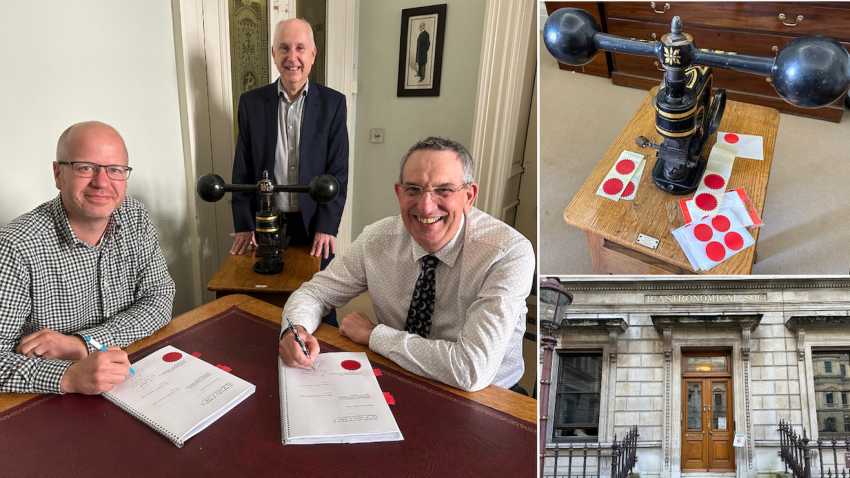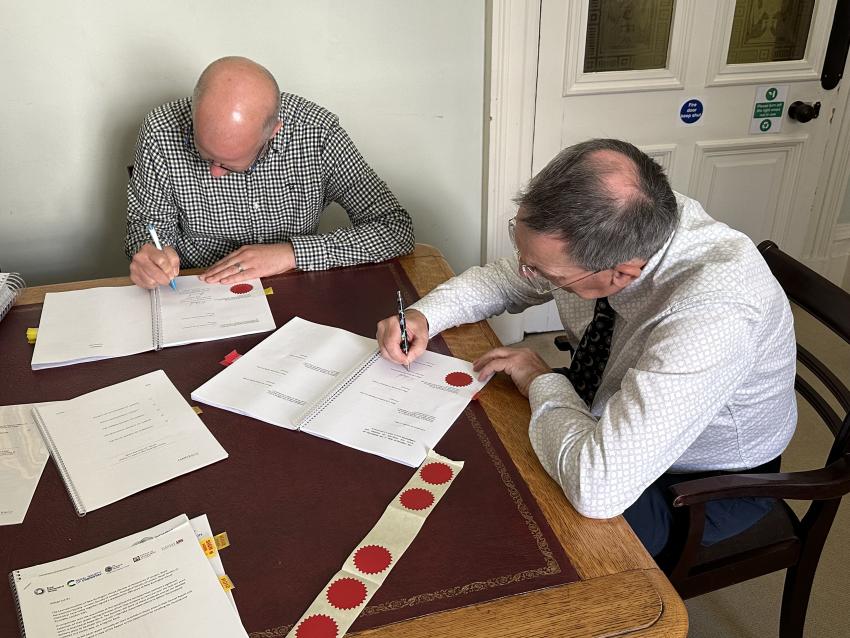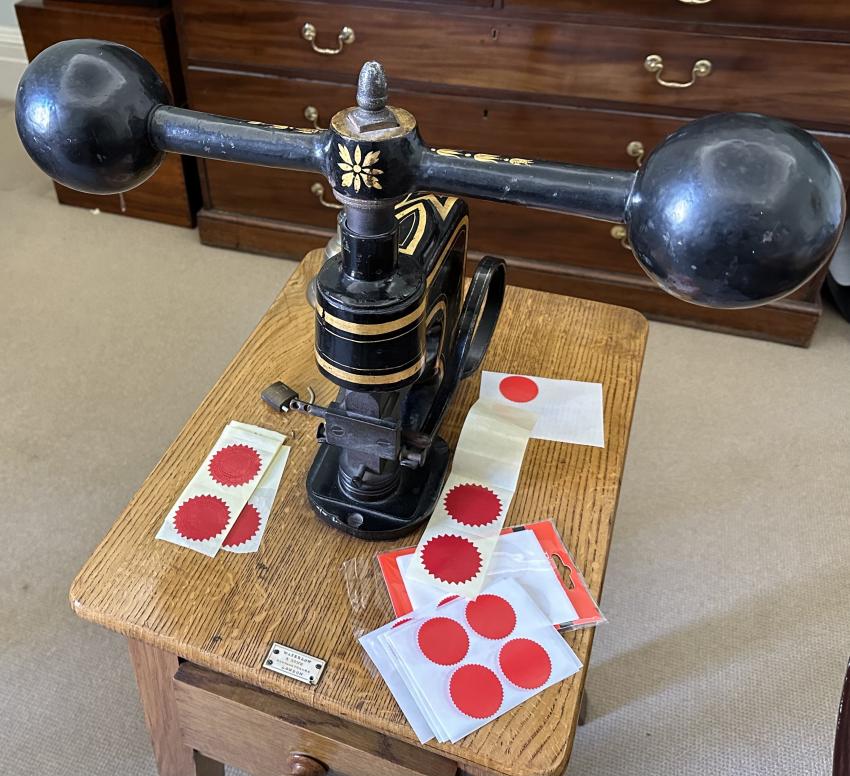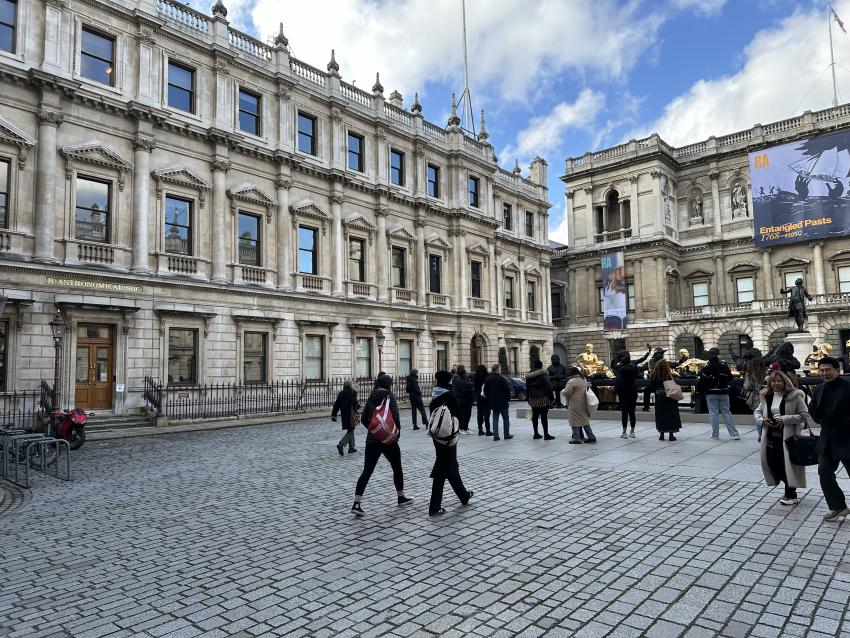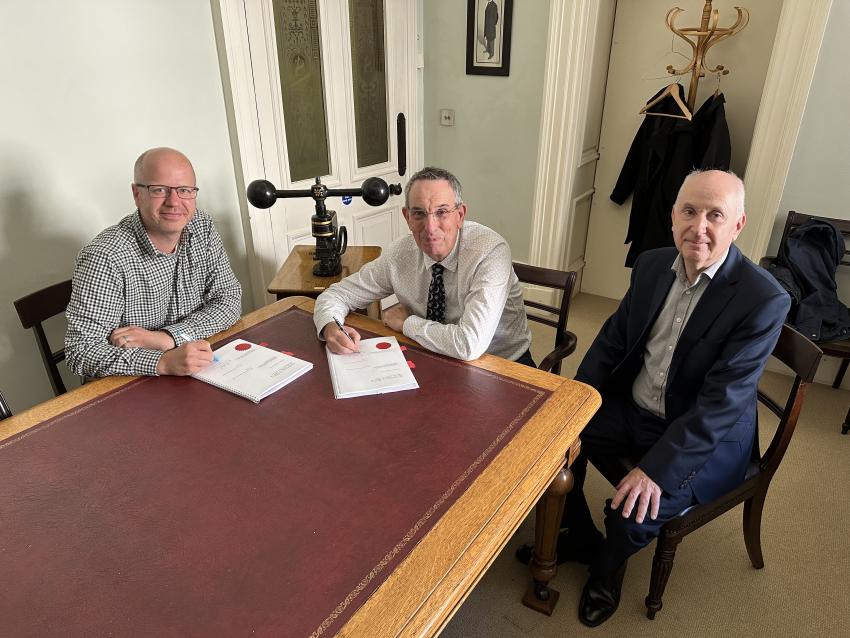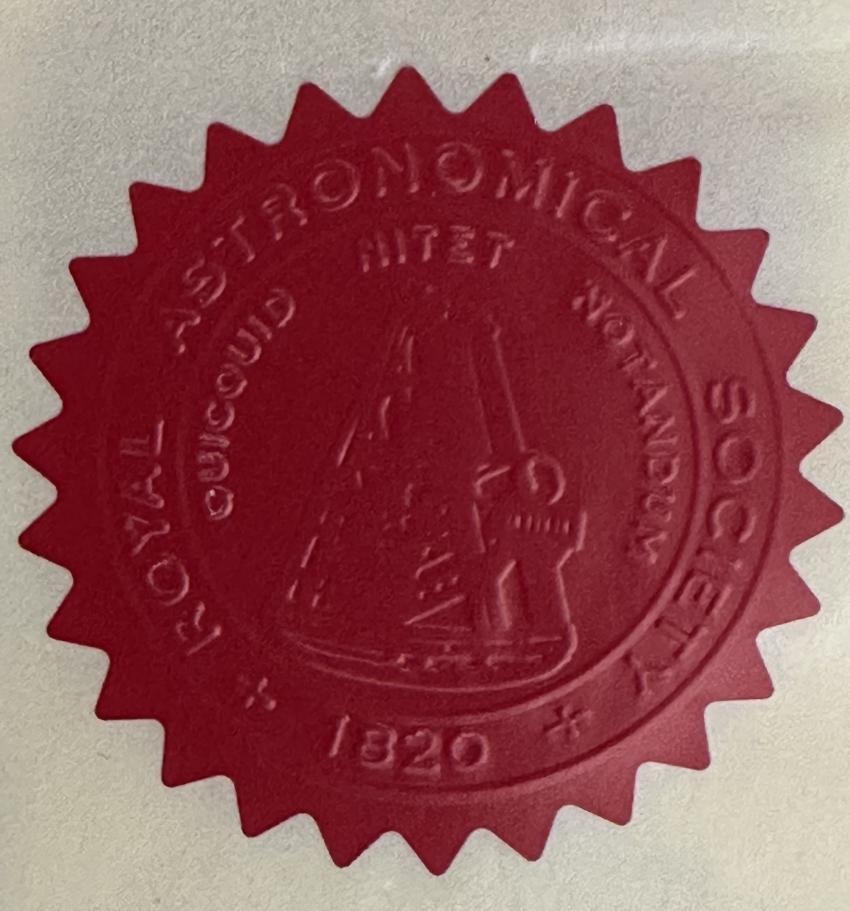The Royal Astronomical Society (RAS) has officially signed a 999-year lease on its London headquarters, having agreed a deal with the Government earlier this year to transfer the building’s ownership.
RAS President Mike Lockwood and Geophysics Secretary James Hammond put their signatures to a series of legal documents to complete the handover.
These were also stamped with the Society’s seal using a press dating back to the 19th Century.
It comes seven months after the Learned Societies that call Burlington House home – including the RAS, Geological Society, Linnean Society, Royal Society of Chemistry and the Society of Antiquaries – reached a deal with the Government to take charge of the 19th century building.
They agreed to make a payment to the Ministry of Housing, Communities and Local Government in return for a 999-year leasehold at Burlington House at a peppercorn rent.
The Societies also vowed to create an expanded programme of outreach activity to reach groups and communities who may not otherwise have the opportunity to engage with their collections and their work.
Under the new deal, responsibility for the fabric of the building will transfer from the Government to the charitable organisations, allowing them to focus on ambitions to make their headquarters more accessible and sustainable.
Prior to the agreement, the Learned Societies’ place at Burlington House had been under threat because of unaffordable rising rents.
The scientific hub, which sits at the heart of London’s Piccadilly and is also the residence of the Royal Academy of Arts, was built by the Government in the 19th century to support the work of the Societies that call it home.
Designed to bring people together to disseminate knowledge and serve the public interest, today the 150-year-old scientific and cultural ecosystem at Burlington House is playing an important role as the world looks to solve pressing challenges.
From mitigating climate change and biodiversity loss, to understanding the origins of our Universe and developing new methods to use the Earth’s resources sustainably, the building is where historical understanding and scientific discovery converge to help find the answers.
With a secure home and continued support from their members and funders, the Societies can now collectively build on their extensive public engagement work, continue to foster research, promote learning for all and inspire and engage communities across the UK and beyond.
Philip Diamond, Executive Director of the RAS, said: “It has been a long road to get this deal but we are delighted to have finally got it over the line.
“Together with a bold five-year strategy set out earlier this year, this marks the start of an exciting new chapter in our history.”
Media contacts
Sam Tonkin
Royal Astronomical Society
Mob: +44 (0)7802 877 700
press@ras.ac.uk
Dr Robert Massey
Royal Astronomical Society
Mob: +44 (0)7802 877 699
press@ras.ac.uk
Notes for editors
About the Royal Astronomical Society
The Royal Astronomical Society (RAS), founded in 1820, encourages and promotes the study of astronomy, solar-system science, geophysics and closely related branches of science.
The RAS organises scientific meetings, publishes international research and review journals, recognises outstanding achievements by the award of medals and prizes, maintains an extensive library, supports education through grants and outreach activities and represents UK astronomy nationally and internationally. Its more than 4,000 members (Fellows), a third based overseas, include scientific researchers in universities, observatories and laboratories as well as historians of astronomy and others.
The RAS accepts papers for its journals based on the principle of peer review, in which fellow experts on the editorial boards accept the paper as worth considering. The Society issues press releases based on a similar principle, but the organisations and scientists concerned have overall responsibility for their content.


